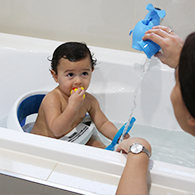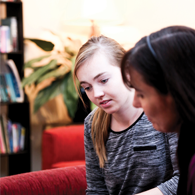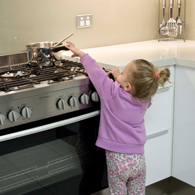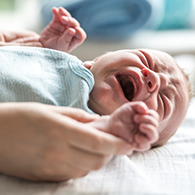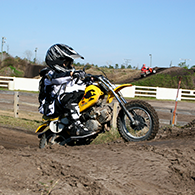Balcony and balustrade safety
A balcony is a platform above ground level that comes out from the wall of a building. If it is more than 1m above ground level it must be surrounded by a balustrade.
A balcony balustrade (sometimes referred to as a railing) is a guard or barrier that is commonly made of metal or timber bars. Glass panels are also often used.
How are children injured?
Entrapment
- Children may get their head, arms or legs caught in the space between balustrade openings.
Falls
- Babies may fall through balustrade openings if the gaps are too wide.
- Children may trip on steps or doorframes leading to the balcony and fall on the hard surface of the balcony floor.
- Children may fall off the balcony if they are able to climb over the balcony balustrade. For example, horizontal rails in balustrades allow children to climb over balustrades. Objects such as pot plants or outdoor furniture, placed next to balustrades may also be used as ladders to climb on.
How common are these injuries?
On average, each year 10 children are admitted to The Children’s Hospital at Westmead (CHW) after falling from a balcony. Almost all of these children fall from a balcony at their own home.
Of the children who have presented to CHW, approximately:
- 75% were under 5 years of age;
- 40% occurred in summer;
- 3 out of 5 cases admitted to hospital were boys.
During the period 2008-2018, 88 children were admitted to CHW alone as a result of falling from balconies. A significant number of these injuries were rated with a high injury severity score (ISS). Injuries from falls, even from very low heights, can be serious; “40% of fatal falls, among children under 15 years of age in Australia, were from heights less than 3 feet (91.44cm)”.1
What are the laws, regulations or standards for balconies?
The National Construction Code of Australia states that:
- balustrades (railings) must be at least 1 metre high, where the balcony is more than 1m above the surface beneath.
- any openings in the balustrade should not allow a 12.5cm sphere (round ball) to pass through.
- where the balcony or deck is more than 4 metres above a surface below, the barrier must not have horizontal or near horizontal (climbing) parts between 15cm and 76cm above the floor surface.
Remember:
- Make sure that your balcony or stair balustrade (railing) is at least 1m high and that vertical bars are no more than 12.5cm apart (use a ruler to measure the gaps between your vertical balustrade posts).
- Your balustrade should have no horizontal or near horizontal parts that would allow children to climb.
- All furniture, pot plants and other climbable objects should be kept away from the edge of balconies.
- Be aware of furniture that is light enough for children to drag to the balcony edge.
- Check balustrades regularly to ensure that they are in good condition.
- Supervise your children while they are on the balcony.
- Keep doors leading to balconies locked so that children cannot gain access to them.
- Do not allow children to play on stairs.
- Install stair gates at the top and bottom of stairs to prevent young children from gaining access to them.
For more information see the Kids Health | Falls.
References:
1. Culvenor, Dr J. (2002) Design of Childproof Barriers to Prevent Falls from a Height in Public Places. Annual International Occupational Ergonomics and Safety Conference.
